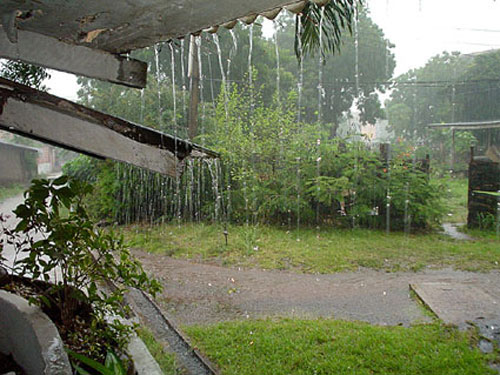The sewage treatment system has been applied since the middle of the 19th century as an action in response to sanitary conditions become more and more grave caused by industrialization and urbanization. So what is wastewater treatment? What is wastewater treatment process? Let’s find out in the article below!

What is wastewater treatment?
Wastewater treatment is the process of removing the pollutants from wastewater (household, commercial. and institutional wastewater). It consists of physical, chemical, biological processes to remove pollutants and produce environmentally safe wastewater. The product of wastewater treatment is usually semi-solid or sewage sludge which requires further treatment before discharged or applied to land (usually being used as agriculture fertilizer).
Origin of wastewater
Wastewater is released by a residential area, organization, production base, and industry. It includes the waste streams from bathroom, kitchen, sink, and ending up in the environment through a sewer system.
In many areas, sewage also includes liquid waste from industry and commerce. The separation and drainage of domestic waste into gray and black water is becoming more common in developed countries, with the gray water is allowed to use to water plants or reuse to flush toilets
Besides, wastewater also includes rainfall-runoff. Drainage systems that are capable of treating stormwater are called combined drainage systems.

Basically, in urbanizing communities period in the middle of the 20th century, they have built separate sewage treatment system and drainage system because of rain creates various streams which reduce wastewater treatment plant performance. As rainfall runs over the surface of roofs and the ground, it may pick up various contaminants including soil particles and other sediments, heavy metals, organic compounds, animal waste oil, and grease.
Wastewater treatment process
➡️ Step 1: wastewater from the plant’s sources is fed into the receiving tank, with the raw garbage dump installed. The sludge is separated from the wastewater.
➡️ Step 2: After flowing the receiving tank, the effluent is drained through the separating tank (for the system where required). Sewage is submersed sewage pumped into the refuse collection equipment to separate solid waste small size before self-flowing into the regulating tank. The mud is also separated.
➡️ Step 3: The regulator is responsible for regulating the flow and concentration of pollutants in the effluent before putting it into the rear unit. Blowers are supplied to the tank to avoid disturbance.
➡️ Step 4: Continue the process, wastewater from an air-conditioning tank is pumped into a cotton flotation tank, and PAC (Coagulant) and polymer (Precipitant) are used to perform the flocculation process: creates bonding and stimulates the bonding of colloids in the wastewater to produce a larger particle that the raw and refined filtration equipment cannot handle. The larger particles after the flocculation, the cotton in the wastewater will be deposited and disposed of in the mud.
➡️ Step 5: The wastewater then flows through the flotation system, where the mixture of air and waste is mixed to form fine foam under atmospheric pressure, the air bubble is separated from the water and the oil and some dangling. Grease and suspended solids are separated from the effluent by means of an automatic de-gage device directed to the sludge tank. Floating flotation systems combine flotation and flocculation to achieve high removal efficiency. At the same time, the phosphorus removal efficiency of the whole system has been improved by this work.
➡️ Step 6: Wastewater is passed through the anaerobic treatment tank. Highly contaminated wastewater will come into contact with the anaerobic sludge and all of the biochemical processes that will take place in the sludge, including hydrolysis, acidification, acetate, methane gas, and other final products.
➡️ Step 7: The effluent from the activated sludge tank adheres to the spillway through the settling tank. Here, the phase separation occurs and the mud (microorganism) is retained/ The sediment is pumped back to the anaerobic tank and the gas is reduced to maintain the concentration of microorganisms in the tank. The excess sludge is pumped into the mud tank. All of the sludge that has been treated is a store (sludge pressed) and the unit has a collection function.
Most of the conventional wastewater treatment processes use the above steps, depending on the type of wastewater is disposed of. For other special processes that fall outside of the generality of the procedure above, one or more of the following major processing systems shall also apply such as Mechanical treatment, chemical treatment, biological treatment, sludge treatment.
If you are interested in treatment technologies about hospital medical wastewater, industrial wastewater, domestic wastewater... contact us for a free consultation - hotline: 0941.113. 286


